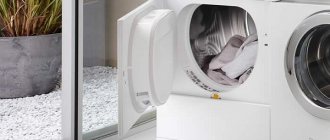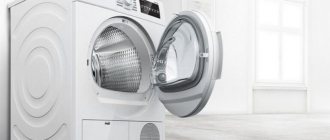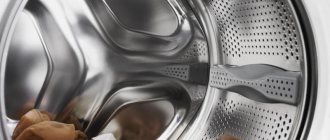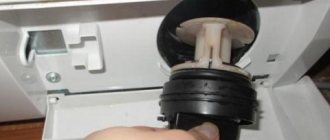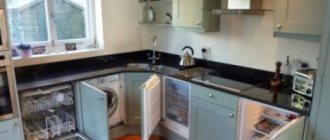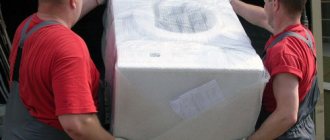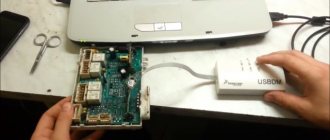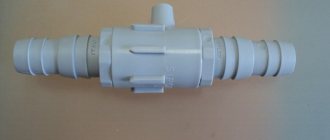The popularity of tumble dryers is growing. It is not difficult to install the equipment yourself.
It can be problematic to find a place in the room where the volumetric apparatus will be located. In this case, installing a washing machine and dryer in a column will be the ideal solution.
- Column installation technology
- Types of dryers
- Correct connection
- Vertical installation
- In the horizontal plane
- Expert recommendations
- Catalog of washing machines with reviews
Column installation technology
How can you place two devices to save more space? Recently they have been arranged in a column. In this position, the machines are as close to each other as possible and occupy a minimum of space, which saves not only space, but also the user’s personal time.
Dryer above washing machine
Washer under dryer
With this type of arrangement, the washing machine is located below the dryer. This can be done in any convenient room. The location of such a set of devices can be a bathroom, kitchen, corridor and even a storage room.
In this case, it is necessary to ensure that the vibration created during operation of one device does not affect the second. Otherwise, it may negatively affect its performance.
Installation options:
- You can use the mounting bracket that comes with dryers.
- Using slats fixed above the washing machine. In this case, it is necessary to take into account the load on the shelf and wall.
- Installation in a niche.
The installation option is selected individually according to the wishes of the owner of the equipment, as well as the complex characteristics of the room in which it is planned to install the washing machine and dryer in a column.
Basic parameters of safe wiring
The wiring in the bathroom must not only function flawlessly, but also be safe.
In case of current leakage onto the body of the electrical unit, during a short circuit or when touched by a part of the body
Selecting the wiring type
In old buildings, built several decades ago, wires with aluminum conductors were mainly used. They are not suitable for connecting modern powerful equipment.
The washing machine may only be connected via a three-core cable with a copper core.
You may also find useful information about what types of wires are used for installing electrical networks in an apartment, discussed here.
To safely establish a connection point for a powerful household unit, a separate power line should be laid from the apartment panel and provided with devices to protect the wiring and the equipment itself
According to paragraph 7.1.40 of the current PUE, in rooms with high humidity, it is recommended to install wiring in a closed way.
To do this, the cable coming from the distribution panel is placed in a groove selected in the wall so that it is hidden and does not even partially come to the surface.
This measure protects the cable from direct contact with water, which is known for its excellent conductive qualities.
For the same reason, when laying in a channel hollowed out in wood, for example, it is not allowed to place the electrical wire in a metal hose or in the cavity of a steel pipe.
The wire cannot be fixed with metal clamps without rubber gaskets. The mounting brackets themselves must have an anti-corrosion coating.
Determination of cable cross-section
In order for the electrical wiring to withstand the high load from a powerful household unit, the cable cross-section should be correctly calculated.
It is determined according to the same principle as when installing any other electrical equipment, taking into account the expected load. The power of the washing machine is indicated in the instructions supplied with it.
To connect household appliances in the bathroom, a cable made of three copper wires is used, one of which is connected to ground.
For laying power lines, only intact wires free of defects are used. All joints are carefully wrapped with electrically insulating self-adhesive tape.
The presence of distribution boxes in the bathroom, inside the hollow body of which the cables of connected devices are connected according to the diagram, is not allowed. Distribution boxes are always placed outside the bathroom.
Procedure for determining the cable cross-section:
- Find out the power of the connected electrical appliance. In most cases it does not exceed 3 kW.
- The cable cross-section is selected in accordance with the reference tables.
When connecting a block of sockets, the total power of the devices “powered” from them is determined, after which, using the same reference tables, the permissible cable cross-section is determined.
Even if the machine consumes less energy, experienced craftsmen recommend making a power reserve. After all, it is possible that over time, an obsolete unit can be replaced with more high-power new equipment.
To connect a washing machine whose power does not exceed 3 kW, a three-core copper cable with a cross-section of 2.5 mm is mainly used
It is recommended to use only copper wire for connection. In comparison with its aluminum “brother”, it is preferable because it has better electrical conductive properties.
Copper wire is capable of withstanding high voltage with a smaller cross-section: 2 kW of load per 1 mm of cross-section. Therefore, the space laid in the groove will take up half as much space. In addition, it is resistant to oxidation and, according to electricians, has a service life of over 30 years.
RCD and machine power
The cable leading a separate line to the bathroom is connected to the indoor distribution panel through an emergency shutdown device (RCD).
The main purpose of the RCD is to protect electrical appliances “powered” from the network from short circuits, and household members from the risk of electric shock.
The leakage current of the protective device for connecting lines when fast protection is needed should be 10 mA. This is due to the fact that the bathroom is characterized by high humidity, and therefore the room is classified as a high-risk room.
A person feels the irritating effect of alternating current already at a value of 5-7 mA.
If the bathroom is “powered” by a group line, the maximum leakage current for connecting the electrical wiring should be 30 mA. Such devices are cheaper than 10 mA, but do not operate as quickly.
The device is triggered when there is an overload of 10 mA, preventing the failure of units connected to the electrical network and the occurrence of a fire as a result of a short circuit
For installation in private houses and apartments, models combined with a circuit breaker to protect the wiring - differential switches - are most often used.
You may also have information about the differences between an RCD and a difavtomat, discussed in our other article.
Modular devices provide protection on three “fronts”: from power supply overload, from exceeding the permissible current leakage value and from short circuit on the line.
Some manufacturers produce sockets that are already equipped with a protective RCD, although the price for them is much higher than for stationary models
If there is no stationary RCD in the electrical distribution panel in the apartment, a portable type RCD is used. They are connected to an existing outlet, and then the electrical equipment is connected.
But the RCD itself is not a complete protection. To protect the wiring and the unit itself from short circuits, a separate residual current circuit breaker is installed.
The residual current circuit breaker is selected based on the cross-section of the cable laid to the socket and the load of the electrical network
Traditionally, a 16A machine is used. In any case, the operating current rating of the RCD must be one category higher than the rated current of the input circuit breaker.
Types of dryers
The market offers models from brands that are popular: Bosch, Siemens, Miele, Asco and others, with a different set of characteristics. Their installation method varies depending on the type.
- Condensation. The heated air is circulated by the drum. During operation, condensate is collected in a special tank. Therefore, there is a need to empty the collection container after each use of the device.
- Exhaust. Air is drawn in and discharged through the hood.
- With heat pump. Operation is provided by an evaporator. Excess moisture is discharged into the sewer drain.
Are you unplugging your washing machine?
Oh yes! No
The most popular models are ventilation type; they can be installed in apartments and private houses. Other options are not as popular.
There are several ways to install together:
- dryer above washing machine;
- both devices side by side in a horizontal position;
- in a plasterboard niche;
- under the countertop or sink.
Installation option
Connection
Before you begin the installation itself, you need to make sure that all the necessary communications are available, without which the operation of the devices is impossible. First of all, you will need water and electricity. Condensing units also require a connection to a sewer drain.
Exhaust versions require accessibility to ventilation shafts, as an alternative - a window. In fact, for installation you need to connect to ventilation, sewerage, electricity and water supply.
Ventilation
Siemens and Miele exhaust models must be connected to ventilation ducts. At first glance, this does not present any difficulty. The air duct from the kit is connected using a flexible corrugated hose to the ventilation hole and secured with standard clamps. However, for proper installation, important nuances should be observed:
- Preference should be given to the option in which the hose has a minimum number of bends. In this form, air and condensate exit without obstruction.
- It is not recommended to create creases on a corrugated hose with sharp and right angles. In this embodiment, their conductivity decreases. Curves should be gentle and not create obstacles.
- In rooms with high air temperatures, where condensation forms in increased quantities, it is preferable to use a straight hose. Thus, its quantity will be less.
- If there is no central ventilation shaft, you must create an air duct yourself. In an apartment, he can go out the window. In private homes there are other options available.
Sewerage
When installing Bosh, Asko, Miele, Siemens (or other brands) condensing dryers together with washing machines, connecting both devices requires a sewer drain. In this case, there will be no need to periodically drain the condensate that accumulates in the standard dryer tray. There are several options for resolving this issue:
- Connect the drain to the sewer pipe. Not the easiest way, since you will need special equipment to create the necessary hole. When connecting independently, this is not always possible.
- As an alternative, a siphon is used. In this case, it must be purchased specially. This should be a combined siphon with several pipes.
- The easiest way is to temporarily secure the drain pipes in the sink area, but it is far from the most reliable.
In any case, it is recommended to use the most convenient and optimal option.
Vertical installation
By installing a dryer above a washing machine, you can save as much useful space in your home as possible. This simplifies access to devices during use. The devices can be installed in any room. Before starting work, you need to take care of the availability of communication connections. More details:
- The SMA must be placed in the right place. This should be done on a flat surface, moving at least 3 cm away from the wall.
- Install the mounting bracket with the dryer stand. At the same time, make sure that there is a rubber seal underneath it. It will reduce vibration levels.
- Secure the stand with bolts.
- Place the dryer so that its feet fit into the grooves on the stand.
- Secure the recesses from the outside using plugs.
Expert opinion
I work in the household appliance repair industry. Extensive experience in restoring washing machines and dishwashers.
Ask a Question
Attention! The vertical column option is the most difficult to implement. When performing work, safety and installation rules must be strictly observed. The structure must be securely fastened. Installing a column without special fastening is strictly prohibited.
Important points:
- Before using fasteners, you should make sure they are secure.
- It is necessary to take into account how much the wall will withstand the load.
- You will have to use the devices one at a time.
- Both the washer and dryer should be about 3cm away from the wall.
The MCA should be at the bottom, but not vice versa. Its weight is much greater and vibrations during operation are stronger. Therefore, the dryer, regardless of the model and brand, is always placed at the top with this installation method.
Placement in a column
Placement methods
There are several ways to install a dryer yourself. In apartments and private houses installation can be carried out as follows:
- on top of the washing machine;
- next to the “washing machine”;
- in a special niche or closet;
- under the tabletop.
The most popular option is to install a dryer on a washing machine, which is also called “in a column”. In this case, you can save free space, which is especially important in small one-room apartments. In order to install the “dryer” above the washing machine in a column, you need to use special fasteners that are included in the kit.
Installation is quite simple - anti-tip mounts and special caps are installed on the washing machine body. After this, the body of the dryer is attached to the caps, the legs are unscrewed and the equipment is leveled. There is also the option of attaching to the wall using special slats, but it is used extremely rarely. The only important point is that the washing machine should not be narrow (this means dryers), otherwise the stability of the upper body will be questionable.
Please note that installing a dryer in a column without fastening and anti-tip elements is strictly prohibited. Firstly, these parts protect the washing machine from damage from vibration, and secondly, they give stability to the dryer so that the equipment does not tip over during operation.
Here are some visual instructions for installing a dryer on a washing machine:
An easier installation option is next to the washing machine. In this case, more space will be required, but at the same time the equipment will be more stable and there will be no possibility of a negative impact of the dryer on the washing machine during operation. Most often, this option is used in spacious houses and apartments with a large bathroom or a separate room, for example, a wardrobe or laundry room. Installation is not difficult; you just need to install the case in the right place and unscrew the legs so that the equipment is set strictly at level.
If you are just renovating your apartment and are thinking about installing a drying machine, you can make a niche for it from plasterboard in advance. A more complex, but convenient option is to make a special cabinet for installation in a column. We recommend viewing both the first and second ideas in photo examples:
Well, the last installation option is under the countertop or sink. If the dimensions of the equipment are small, why not save space and install the case in the kitchen unit? This idea is very popular, and if you choose a condensing model, the sewerage system will be nearby, which will simplify connecting the dryer to the drain.
In the horizontal plane
Perhaps this method is much simpler and does not require any special fasteners. Having a washing machine and dryer next to each other is very convenient. This installation option is suitable if there is sufficient free space.
Expert opinion
I work in the household appliance repair industry. Extensive experience in restoring washing machines and dishwashers.
Ask a Question
Installing the equipment couldn't be easier. Two devices are placed side by side, grounded and connected. Alternatively, they are placed in a special niche. You can make it yourself from wood or drywall. In this version, the technique looks more aesthetically pleasing, but the process requires money and time.
Under the sink or countertop
The most “compact” way to create a vertical column involves installing it under a countertop or sink. Moreover, they can be in close proximity to each other. For this installation option, it is necessary to provide for the availability of communications in advance, as well as the possibility of embedding at the washing machine.
budem_menyat
mielekharkov
alexandra_zadorozhnaya_design
premiumtech_tver
primaveratomsk
bosch.siemens.neff
Benefits of using a drying machine
Before using the machine to dry washed clothes, you need to familiarize yourself with the advantages of these devices. The advantages of dryers include the following:
- The process of drying clothes is carried out very quickly and efficiently. After this, you don’t even have to hang things up to dry.
- The functional features of the devices allow you to dry clothes to the required level of humidity. This allows you to efficiently dry things made from capricious fabrics.
- The evaporation of moisture inside the dryers helps smooth the fabric. Therefore, there is no need to iron them again.
- Possibility of refreshing linen. This allows you to get rid of unpleasant odors that are embedded in the fabric.
However, such devices also have some disadvantages that you need to familiarize yourself with before purchasing and using them:
- high cost of modern models;
- bulkiness, due to which a lot of space will be required to install the dryer.
Expert recommendations
More details:
- You should not install devices one on top of another just like that. This is a gross violation of operating rules and regulations and is therefore strictly prohibited.
- While the dryer is running, the washing machine should be turned off and vice versa.
- Do not forget that vibrating devices should not be placed close to the wall. There should be at least 3 cm between them.
- Two devices of the same brand are more convenient to use, and this option should be preferred.
- If it is impossible to purchase devices from the same company, they must still fit in size.
Installing washing machines and dryers in a column is a rational and simple way. If you have certain skills and desire, you can do this yourself.
But before you start work, you need to study all the nuances. You should take care of the accessibility of communications, prepare a mount if necessary, and also carefully read the operating instructions for the device.
Video
Connection to communications
When you finish installing the dryer in the column, you will need to move on to connecting it to ventilation or sewerage, depending on what type of device you have chosen.
Ventilation
As for ventilation, everything is simple here. On one side of the case there is a ventilation hole to which you need to connect a flexible air duct. Fastening is carried out with a special clamp included in the kit. The second end of the corrugation must be led either into the central ventilation system, or into the window, if there is no such system. We draw your attention to the fact that it is not recommended to bend the corrugation by 90°, because in this case, the hood will work much worse. Try to route the duct with minimal bends and turns.
Another important nuance that you must remember is that if the dryer is connected in a room with a high temperature, you should not route the flexible air duct through the top, because in this case, condensation will collect and prevent air from escaping, as shown in the picture. In this case, you need to consider another option, for example, make a hole in the wall opposite the outlet from the machine so that the area is horizontal.
Sewerage
If you bought a condensation type dryer, you can drain the tray with water after each drying, or you can make your life easier and connect the equipment to the sewer. For the last installation option, a special drain hole is provided, which is connected to the sewer with a regular hose. The connection in this case is similar to connecting a washing machine - you just need to lead the hose either directly to the drain or temporarily to the sink/toilet.
Electricity
Well, the last of the communications is the home electrical network. To connect the dryer to the network with your own hands, you can bring out a separate line from the distribution box, or you can use an outlet. The latter wiring option is more logical to use, because The power of home appliances usually does not exceed 2.5 kW. The only nuance that you need to take into account is that the outlet must be grounded. In addition, the electrical network that serves the dryer must be protected by an RCD and a circuit breaker to protect the network from overload and current leakage. As a rule, in the distribution panel it is enough to connect a 16A RCD and the same circuit breaker.
Please note that you should not connect both a washing machine and a dryer to the same double socket. If both devices are operated simultaneously, the socket may overload and melt, resulting in a short circuit!
That's all the instructions for installing the dryer and connecting it yourself. We recommend using the installation method - in a column above the washing machine, so as not to waste square meters of the room! As you can see, there are no difficulties in installation, so you can do everything yourself. At the same time, the cost of calling a specialist ranges from 1,500 to 4,000 rubles, depending on the complexity of the work. So why pay such a price if you can do everything yourself?
Related materials:
It is quite possible to install a dryer on a washing machine. Of course, if the washing machine has side front loading of laundry.
This is an excellent option for those who have a small living space, but do not intend to give up the services provided by drying equipment.
If it is not possible to place two cars next to each other, we put one device on top of the other and get the following design. Look at the photo:
An excellent solution for installing a dryer
The method of installing equipment in a column not only saves space, but is also practical, convenient for work and looks quite natural.
But when choosing this complex installation option, you need to take into account some details and follow the installation rules. Namely:
If you want this technical structure to have an aesthetic appearance, it is highly desirable that both devices be of the same brand, that is, similar in design. Then they will represent something single. Such a harmonious “ensemble” will fit perfectly into the interior of a bathroom, kitchen or other room.
If matching brand and design is highly desirable, then matching the dimensions of the top and bottom surfaces of both machines is essential.
How to connect
There are certain features of connecting a dryer that need to be dealt with in advance.
Ventilation
Some people think that connecting a dryer to the vent is difficult, but this is not true. On one side of the dryer there is a special hole through which it is connected to the ventilation system. To secure the connecting corrugation, special clamps are used, which are supplied with the device.
The second side of the corrugation can be brought out into a vent in a window or into an opening in the central ventilation system
You must connect such a tube very carefully so that it does not bend by 80-90 degrees, as this will make it work worse
Sewerage
Condenser dryer models must be connected to a sewer system into which excess liquid will drain. Most of these devices have holes through which they are connected to the sewer. To connect the dryer and the sewer system, a regular hose is used, which can be led into the toilet, sink or separate drain.
Electricity
The last communication to which you need to connect the dryer is the electrical network. To connect it to a power source, you need to select a separate line on the distribution box. You can also use a free outlet. However, to connect such powerful equipment, you must use sockets that are equipped with separate grounding. However, experts do not recommend connecting a washer and dryer to the same double outlet at the same time.
